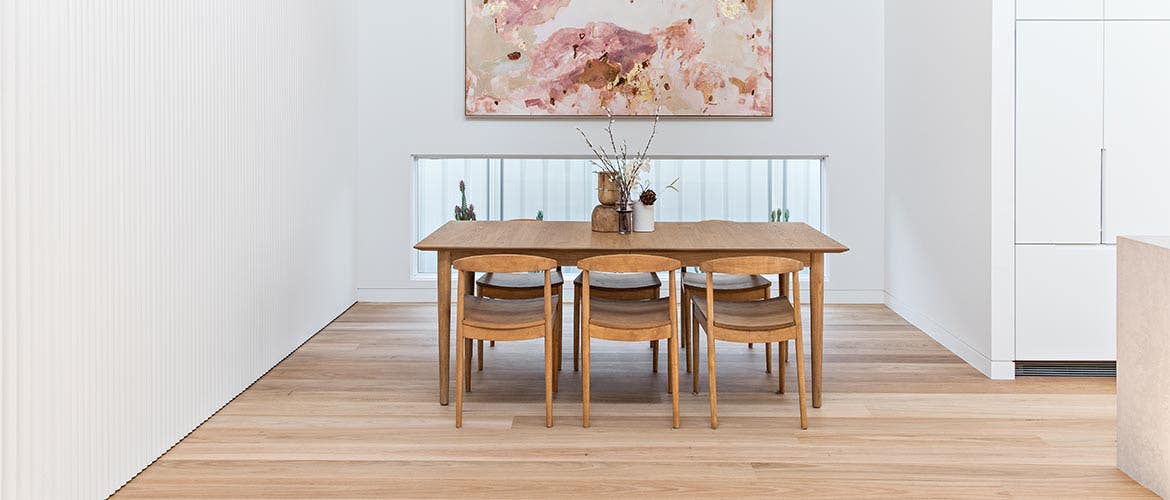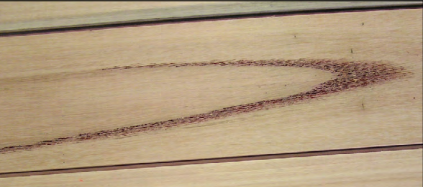Timber flooring grades
House designs and trends may change through the years, but timber flooring has stood the test of time due to its ability to create warmth and aesthetic appeal, whether it is for solid flooring, 14mm overlay, or engineered flooring.
Your clients will continue to ask for timber flooring, and sometimes the result is not necessarily what they envisioned. This is caused in part by the information available to them and the limited knowledge that they have around hardwood flooring. You’ll know from experience while speaking with your clients, that they will come to you with images of flooring or specific timber species that they heard are durable and popular.
We have had customers come to us with concerns on what was supplied for the project versus what their clients expected. This can occur when the client asks for a specific species of timber flooring and they don’t anticipate the appearance of timber’s natural features will look on the finished floor.
To reduce the risk of an unhappy client, you will be in a better position to make recommendations to them when you help them understand the basics of timber grading and how the natural features of the different species affect the overall look of the flooring.
| Want to find out about timber overlay? Read our article of the 14mm timber overlay |
How is hardwood flooring graded?
According to the Australian Timber Flooring Association (AFTA), “Grading by visual means is simply a sorting process based on the size and number of features present in the boards. Boards with fewer and smaller features are sorted into one grade while those with more frequent and larger features would be sorted into another grade. Each of the grades has specific criteria and is given a name which may be in line with one of three grades contained in Australian Standard AS 2796”.
Grades and grade features
The standard provides for three grades and the only difference between them is the size and number of the features permitted:
|
|
Select Grade A floor where the feature present or natural discolouration doesn’t dominate the appearance of the floor. Features permitted within this grade is minimal, including short narrow gum veins, a limited number and size of past borer and small knots. |
Standard Grade This grade allows for more character than the Select Grade floor. Depending on species, expect an increased amount of gum vein, past borer activity, knots, and natural discolouration.
|
High Feature Grade Providing for a floor that contains boards with similar features to Medium Feature, but the length of the features such as gum veins may be longer and past borer activity maybe more frequent. |
|
Our suppliers promote their products by using different names but the timber will always be graded to the AS 2796: |
Boral Hardwood: N/A Hurford: Select |
Boral Hardwood: Premier Grade (Previously known as Standard and Better) Hurford: Standard (solid), Prestige (some overlay or 180mm) |
|
|
Gum veins
|
Tight gum veins Narrow and short in length
|
Tight gum veins Blacksawn gum vein Loose gum veins (as opposed to tight) are permitted to a degree |
Tight gum veins Long gum veins Loose gum veins |
|
Past borer activity
|
Less discolouration and fewer holes (photo 1) |
More holes than the Select Grade with some discolouration (photo 2) |
There’s more discolouration permitted in this Grade |
|
Knots
|
No splits permitted from the knots Small knots are often not found in Select Grade boards |
Knot checks are permitted (photo 2) |
Knot checks are permitted (photo3) |
|
Checking*
|
Short narrow width checks are permitted |
There is the same length consideration as the Select Grade, but the check is wider |
The knots can only be as wide as the Medium Feature, but it can appear in any lenth |
|
Gum pockets and overgrowth
|
Not permitted |
The first 2 photos will not be permitted due to the depth of the pockets |
The first 2 photos will not be permitted due to the depth of the pockets |
* Unless the check in the first photo was about twice the length shown, then the checking in these photos would meet Select Grade requirements.
It is important to note that colour and board length are not covered by the standard, and sanding of a floor can increase the size of some features, or cause features to appear.
Different Species different looks
It is important to keep in mind that the amount of, or the presence of naturural features within a timber flooring grade will change from species to species. For example Blackbutt and Spotted Gum’s prominent feature is back sawn gum vein which may not be for everyone. If your client does not like the look of this feature but likes the color of the species it may be worth exploring a species like White Mahogany in lieu of Blackbutt and Grey Ironbark or Tallowwood in lieu of Spotted Gum. All three species do not contain high levels of gum vein but can still include similar tones to the more popular choices.
Want to know more about how the different species affect the look? Read The Blonde and the Beautiful








